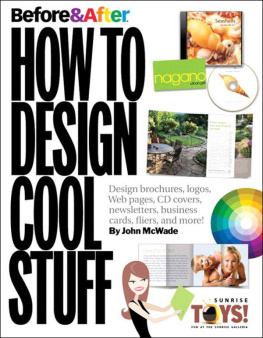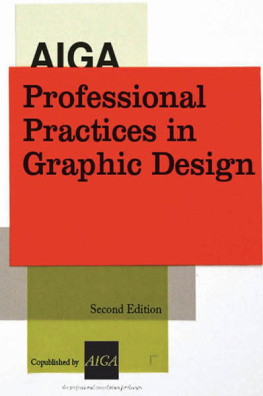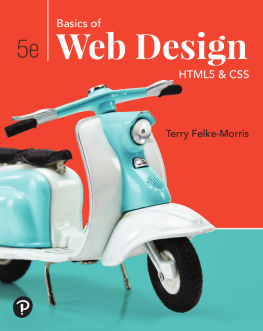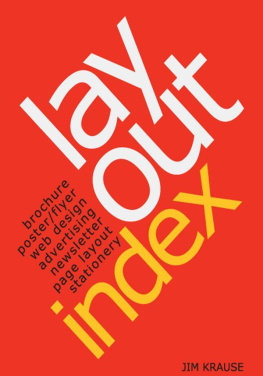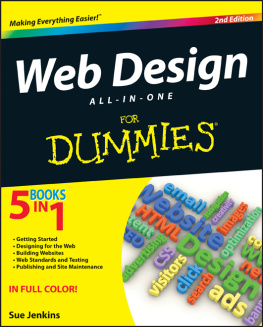
Before & After
How to Design Cool Stuff
John McWade

Before & After: How to Design Cool Stuff
John McWade
Peachpit
1249 Eighth Street
Berkeley, CA 94710
510/524-2178
510/524-2221 (fax)
Find us on the Web at: www.peachpit.com
To report errors, please send a note to
Peachpit is a division of Pearson Education
Copyright 2010 by JMS Publishing
Project Editor: Nikki Echler McDonald
Production Editor: Tracey Croom
Development and Copy Editor: Cathy Fishel Lane
Indexer: Ken DellaPenta
Cover design: John McWade
Interior designer and compositor: Kim Scott, Bumpy Design
Notice of Rights
All rights reserved. No part of this book may be reproduced or transmitted in any form by any means, electronic, mechanical, photocopying, recording, or otherwise, without the prior written permission of the publisher. For information on getting permission for reprints and excerpts, contact .
Notice of Liability
The information in this book is distributed on an As Is basis without warranty. While every precaution has been taken in the preparation of the book, neither the author nor Peachpit shall have any liability to any person or entity with respect to any loss or damage caused or alleged to be caused directly or indirectly by the instructions contained in this book or by the computer software and hardware products described in it.
Trademarks
Many of the designations used by manufacturers and sellers to distinguish their products are claimed as trademarks. Where those designations appear in this book, and Peachpit was aware of a trademark claim, the designations appear as requested by the owner of the trademark. All other product names and services identified throughout this book are used in editorial fashion only and for the benefit of such companies with no intention of infringement of the trademark. No such use, or the use of any trade name, is intended to convey endorsement or other affiliation with this book.
ISBN 13: 978-0-321-58012-2
ISBN 10: 0-321-58012-5
9 8 7 6 5 4 3 2 1
Printed and bound in the United States of America
Acknowledgements
An online reader not long ago wrote to me and said simply, Youre a rich man, John McWade. By which he was referring to the trust that so many of you have placed in me, and the fact that I can pose, in his case, a simple question, and so many are willing to pitch in and help.
In this way, I am indeed rich. Before & After has the worlds best audiencecurious, creative, expressive, loyal. Some of you have been with us for 20 years. Some we hear from often, others rarely. Some of you are a visible part of our lives, contributing directly and obviously to our work. With others, we gladly share our hours and our confidence. Still others team with us and work to a common vision.
This book is the product of such teamwork.
Id like to thank our friend Michael Solomon, without whom we could not have gotten our second start. Thank you to our industry colleagues, whose co-operationin the full sense of the wordhas yielded new markets, new revenue, and, not least, moral support. And thanks to Seth Godin and Sean DSouza, friends and foils who see the world differently than we do and provide valuable perspective.
Closer to home, theres my staff. My wife Gaye, without whom I would be someone else, someone smaller. Dexter Abellera, our talented and tireless senior designer, whose work fills the pages of this book; e-mail Dexter at 3:00 a.m. and youll probably get a reply. And our unnamed Webmaster, not shy but secretive anyway, who keeps us online and, basically, in business, with her abundant technical skills and her care. Her name is Dr. Evil.
Im delighted to thank the hardworking crew at Peachpit Press, who pretty much hounded us into making this book. (This is a good problem to have!) Ill start with publisher Nancy Ruenzel and add editor Cathy Lane, who also edits LogoLounge.com. Both, once upon a time, were competitors of ours but then came over from the Dark Side. Nikki McDonald is the acquisitions editor who got this project launched and has kept it sailing smoothly. And thanks to Kim Scott, who has now laid out all three of our books, and production manager Tracey Croom.
None of us ever creates anything alone, and I am grateful for every one of you who, in ways large and small, visible and invisible, has helped shape Before & After into what it is today.
Contents
Introduction
This book, like the two before it, is a compilation of articles that first appeared in our magazine, Before & After, How to design cool stuff.
Before & After, for you who dont know, is a magazine that teaches graphic design. A better way to say it would be that its a magazine that explains graphic design, or illustrates it, because we dont teach in the sense of conducting a formal course of study, where skills are learned in a sequence, each building upon the last.
What we do is show it, typically with a reallife project, and explain whats going onwhy these colors go together (or not), why this object must be bigger than that object to convey thus-and-such a meaning, and so on.
Some people get this kind of instruction in school, but most do not. Most of us are like you. You know some about design, you have an interest in it, and you have a need for it.
Maybe you have a brochure to write.
Or a slide presentation to make.
Or a newsletter to edit.
Or a Web site to build.
Maybe you need a logo for your new business. Or an ad. Or a DVD cover.
Whatever the case, you have a story to tell that has some kind of visual expression, meaning that it can be seen. Thats where design comes in.
Inherent in the meaning of design is the idea of planning. To design a building or a garment or even a business means to plan it, then actually work the plan.
Graphic design, of course, means to plan the visual presentation of a thing. Design is about how it looks, but theres more, because how it looks cant be separated from what it says and does.
There is a process to design, and the key step is the first one: Decide what needs to be achieved. Ask, in other words, where are we going? Once you know, you work out what needs to be said, the concept youll use to say it, the elementstype, colors, images, and so onthat will express the concept, then you work them together into the finished piece.
Before & After does this in the real world.
Weve arranged this book in three sections: Knowledge, Technique, and Projects. Because every design has all three, they naturally overlap.
Knowledge is about the basics. Basics are called basic not because theyre simple-headed but because they are the basis, or foundation, of every design. Basics include line, shape, direction, motion, scale, proportion, similarity, proximity, color, composition, and so on. You learn the basics because they make your work easier and your designs better.
Technique illustrates practical ways and methods. Whats valuable about this section is its transferability. The way you crop photos on this brochure can be repeated on that Web page. The way you set your type or handle a margin or overlap an object in this advertisement can be done again in that newsletter. Some techniques have a big effect and make dramatic designs and because of that are obvious. Others are influential but small and can be repeated forever unnoticed. All have their place. Youll see.
Next page
